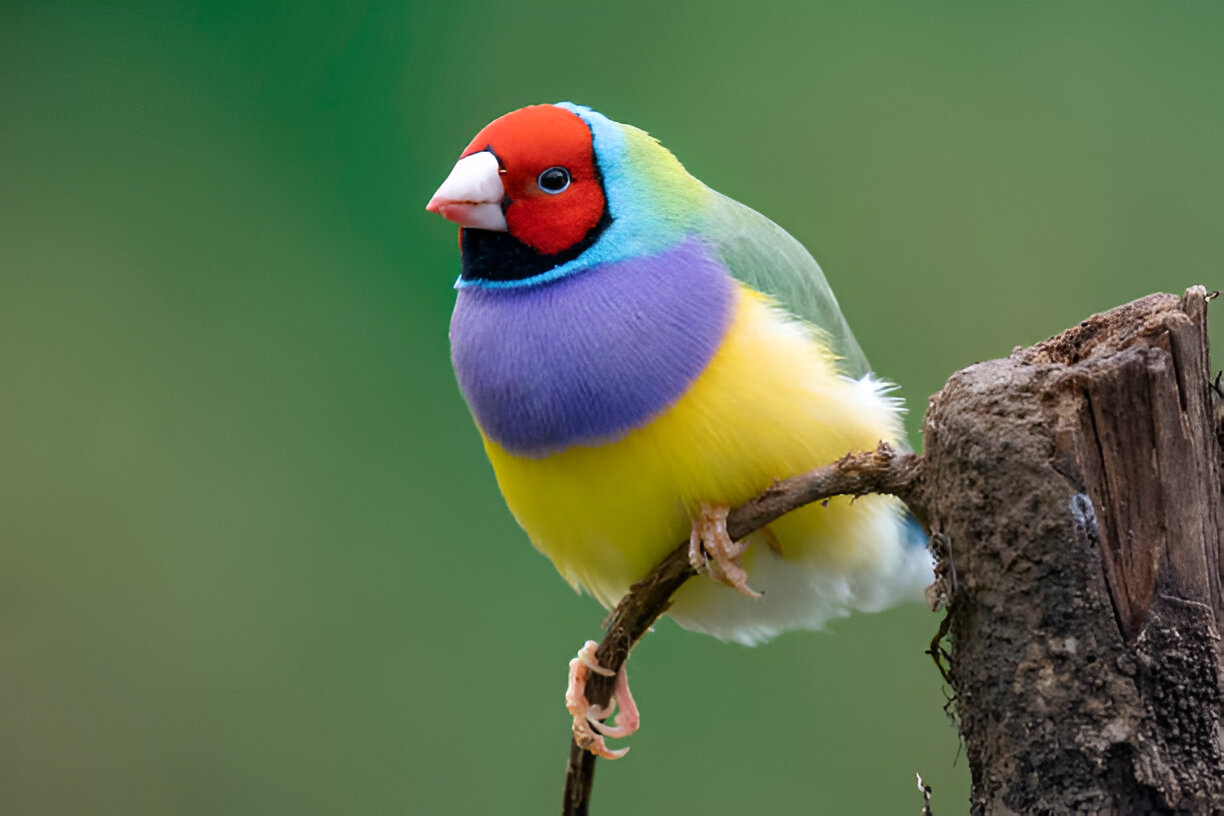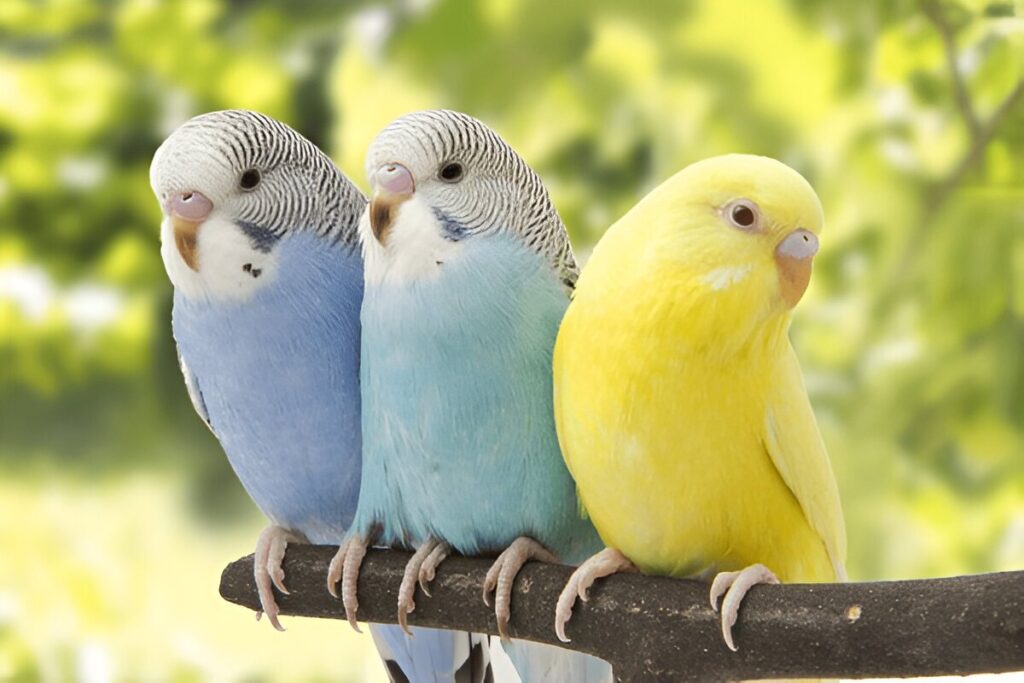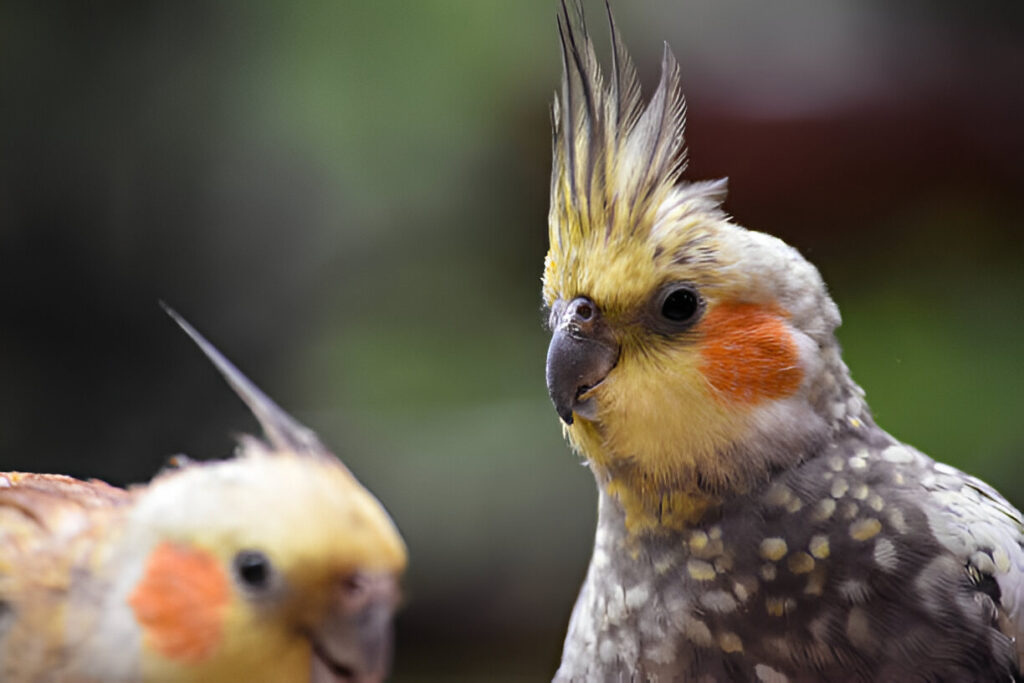Finch Birds: Behavior, Habitat, Diet, and Conservation
Finches are among the most fascinating and diverse bird species in the world. Known for their vibrant colors, melodious songs, and adaptability, these small birds have captured the hearts of bird enthusiasts and pet owners alike.
Whether you’re curious about their natural behavior, interested in attracting them to your garden, or considering keeping them as pets, this comprehensive guide will provide you with everything you need to know about finches. We’ll also explore conservation efforts to protect these beautiful birds and ensure their survival for generations to come.
Introduction to Finch Birds
Finches belong to the family Fringillidae, which includes over 200 species of small to medium-sized passerine birds. They are found on every continent except Antarctica and are particularly diverse in the Americas, Europe, and Asia. Finches are known for their conical beaks, which are perfectly adapted for cracking seeds—a staple of their diet.
Popular species include the House Finch, Goldfinch, Zebra Finch, and Gouldian Finch. Each species has unique characteristics, such as the bright red plumage of male House Finches or the striking multicolored feathers of Gouldian Finches.
Behavior and Social Habits
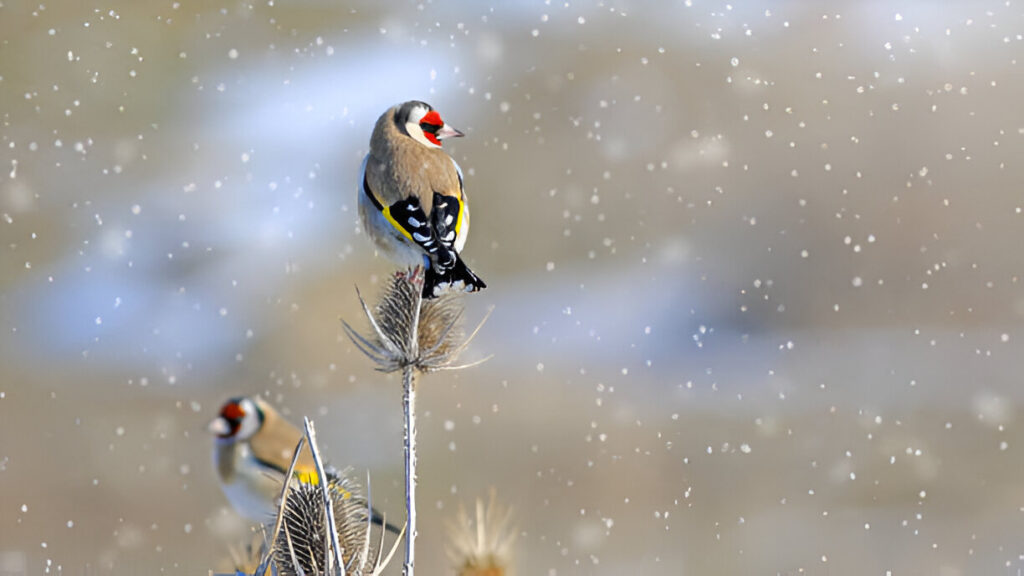
Finches are social birds that spend much time together; most species have to be kept with their kind to the point where, with regards to a number of species and food availability, flocks may often assemble, often between just several birds to hundreds.
They offer safety in numbers for detecting predators and finding food sources. During the non-breeding season, finches are especially gregarious, gathering in large groups to forage and roost together. However, their social dynamics are complex and fascinating, shaped by communication, playfulness, and a well-defined hierarchy.
Communication: Songs and Calls
One of the most distinctive features of finches is their vocalizations. Male finches are especially known for their songs, which serve multiple purposes. These songs are used primarily to attract a mate and to establish territory. Each species has its specific song, and some males, particularly, can even mimic calls from other birds, incorporating them into their song. The House Finch has a lively, warbling song, while the Zebra Finch produces a series of rapid beeps and trills.
The females are generally quieter and only call in short, contact calls or chirps. These calls are very often used in communicating within the flock, such as warning of food or possible danger. Young finches learn their songs from adult males, and the quality of a male’s song can be indicative of his health and genetic fitness, thus being a critical factor in mate selection.
Playfulness: Active and Inquisitive Nature
Finches are very active, inquisitive birds that are never still. They love flying, hopping, and exploring their surroundings both in the wild and in captivity. This playful nature is not for mere entertainment; it is meant to develop important skills, including foraging and spatial awareness. In captivity, finches appreciate toys, perches, and other forms of enrichment that stimulate their natural behaviors.
Their curiosity often gets the best of them, as they investigate new objects or changes in their environment. For instance, if you add a new feeder or plant to your garden, the finches are likely to be among the first birds to investigate it. This adaptability and willingness to explore make them a joy to observe.
Hierarchy: The Pecking Order
In flocks, finches also establish a hierarchy of dominance, and it is typically referred to as “pecking order.” This social establishment regulates access to food, nesting sites, and partners. The stronger birds, usually older or more experienced in finch standards, are normally the ones granted precedence over any other. An aggressive display may be shown by one through chasing and pecking, singing, and various posturing.
The pecking order is fluid and dynamic-it can change continuously, particularly in a breeding season because competition for companions and nesting areas heightens at this time of the year. The lesser ones or more junior birds, therefore, also have their share of challenging times as brief conflicts will erupt. Nevertheless, such disputes normally are resolved immediately, with the flock normally returning to conditions of relative conciliation.
Social Bonds and Pairing
Finches are known to be extremely social, forming strong bonds that are especially close between pairs. The majority of finch species-Zebra Finch-are monogamous, with most pairs staying together for life. These pairs will often preen each other’s feathers, feed each other food, and sometimes even build a nest and bring up the young together. Even out of breeding season, paired finches will often remain close, reinforcing their bond through frequently interacting with one another.
In larger flocks, the finches may also break up into smaller subgroups based on family ties or friendships. These subgroups often forage and roost together, adding further layers of social structure to the flock.
Seasonal Changes in Behaviour
The behavior of finches can vary quite a bit with the seasons. During the breeding season, males become more territorial and vocal as they compete for mates and defend nesting sites. Females, on the other hand, are concerned with choosing a mate and preparing for nesting. Outside of the breeding season, finches are more communal, forming larger flocks and focusing on foraging and survival.
In harder climates, some finches are known to make an astonishing change in appearance-the American Goldfinch, for instance-molts its brilliant breeding plumage for a subdued winter coat. It’s a seasonally induced transformation of state, accompanied by changes in behavior, where finding food and shelter becomes more important than breeding activities.
Habitat and Distribution
Finches are incredibly adaptable and can thrive in a variety of environments, from forests and grasslands to urban areas. Their habitats vary depending on the species:
- House Finches: Commonly found in urban and suburban areas, often nesting in buildings or gardens.
- Goldfinches: Prefer open fields, meadows, and areas with abundant thistle plants.
- Zebra Finches: Native to Australia, they inhabit dry grasslands and savannas.
- Gouldian Finches: Found in the tropical savannas of northern Australia.
Diet and Feeding Preferences
Finches are essentially granivorous, their diet mainly comprising seeds. This is well reflected in their powerful, conical beaks, which are highly adapted for the cracking of seed shells. However, finches are not exclusively seed-eaters; they consume insects, fruits, and vegetation as well, particularly during the breeding season when extra protein is required for egg production and chick rearing.
Understanding their dietary preferences helps in attracting them to your garden, keeping them healthy as pets, and supporting their survival in the wild.
Favorite Seeds
Seeds are the major component of a finch’s diet, and the different species of finches have different preferences. Among the most commonly preferred seeds are:
Sunflower seeds: These are a favorite of many finch species, high in fats and proteins, which they need for much-needed energy. In particular, black oil sunflower seeds have soft shells and are easily cracked by finches.
Nyjer (Thistle) Seeds: These tiny seeds are packed full of oil, favored especially by the Goldfinches and Pine Siskins. Nyjer seed is often dispensed in specialized mesh feeders to eliminate waste.
- Millet: The staple in almost all finch diets, considering it is both small and easy to take in. Commonly used in various mixes of birdseed, it goes down very well with the House Finches and Zebra Finches.
- Canary Seeds: Small, glittering seeds, highly nutritious and loved by all kinds of finch species, pet finches included, as in the Society Finch.
Depending on their species, some of the additional seeds that finches can enjoy are safflower, flax, and hemp.
Insects and Protein Sources
Seeds form the bulk of their diet, but they also consume insects during the breeding season. More importantly, insects give the protein and other nutrients needed during the production of eggs and building up the chicks. Aphids, caterpillars, and small spiders are common insects that they prey upon. Mealworms or similar small insects can be given to pet finches kept in captivity for their protein needs.
Fruits and Vegetables
Finches also have fruits and vegetables that provide them with all necessary vitamins and minerals, with most of the consumption providing enough water intake. These include:
- Leafy Greens: Spinach, kale, lettuce-all great foods.
- Fruits: Apples, pears, berries, and melons are very acceptable fruits. The seeds from apples should be removed since they are toxic.
- Vegetables: Finches may nibble on carrots, cucumbers, and peas. These should be finely chopped or grated to make them easier to eat.
Feeding Tips for Pet Finches
If you’re caring for finches as pets, it’s important to provide a balanced diet that mimics their natural food sources. Here are some tips:
- Seed Mixes: Offer a high-quality seed mix that includes a variety of seeds, such as millet, canary seeds, and sunflower seeds. Avoid mixes with a high percentage of fillers like corn or wheat that the finches tend to leave alone.
- Fresh Produce: Supplement their diet with fresh fruits and vegetables. Change the type of produce daily to offer them a wide range of nutrients.
- Protein Supplements: During breeding, provide additional proteins like mealworms or egg food-a mixture of hard-boiled eggs and bread crumbs.
- Grit and Calcium: Finches also need grit to digest seeds, and calcium, which is essential for their bones. Provide crushed eggshells or commercial grit supplement.
- Fresh Water: Always have fresh, clean water available for drinking and bathing. Finches are avid bathers, and a shallow dish of water is a nice enrichment activity.
Attracting Finches to Your Garden
If you’d like to attract finches to your garden, offering their favorite seeds is the best way to start. Here’s how to create a finch-friendly feeding station:
- Bird Feeders: Nyjer seeds could be offered in tube feeders or mesh socks, designed to prevent waste and spilling. On the other hand, platform feeders may serve as a great dispenser for larger seeds such as sunflower seeds.
- Feeder Placement: Put the feeders in some quiet and sheltered area so the finches would feel safe from predators. This could be near trees or shrubs; finches can perch on these and then reach your feeder.
- Natural Food Sources: Plant flowers and shrubs that bear seeds or insects. Excellent plants include sunflowers, coneflowers, and thistles.
- Water Source: A birdbath or shallow water dish is great for drinking and bathing. Finches love running water, so adding a little fountain or dripper is great.
The finches can change their foraging needs based on the seasons. Finches need to consume more foods containing protein in spring and summer seasons for the breeding period and rearing their chicks, whereas they prefer high-energy seeds in fall and winter seasons to reserve fat reserves to face cold conditions. By making changes in foods throughout the year, you can take care of their natural foraging needs.
Lifespan and Health
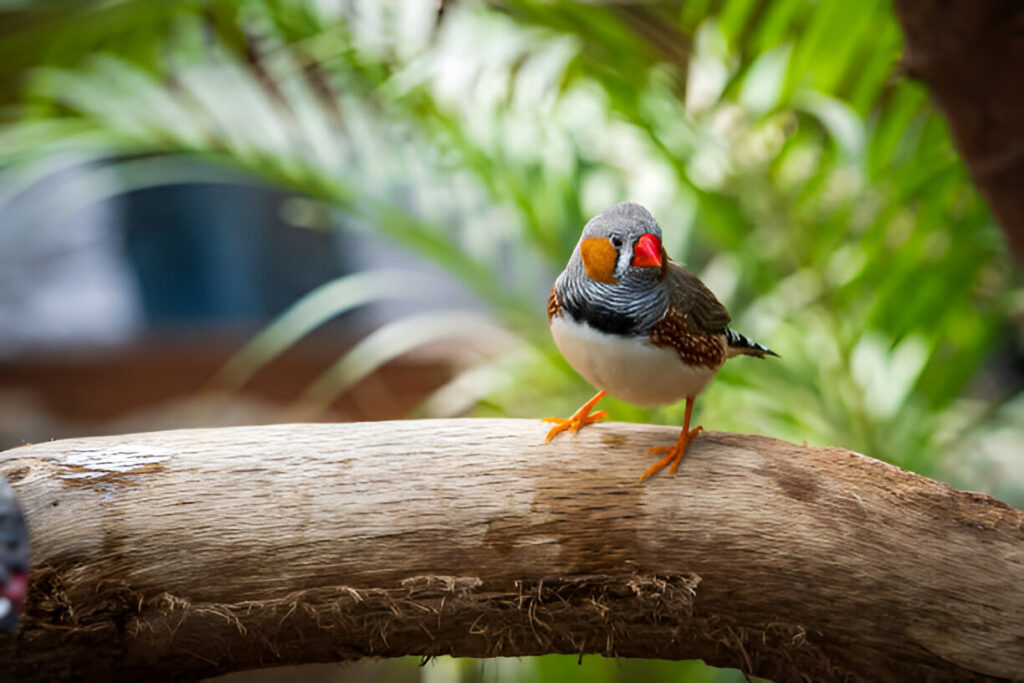
The lifespan of finches varies by species and environment. In the wild, finches typically live for 3 to 7 years, while those in captivity can live up to 10 years or more with proper care.
- Common Health Issues: Respiratory infections, mites, and nutritional deficiencies.
- Preventive Care: Regular veterinary check-ups, a balanced diet, and a clean living environment are essential for keeping finches healthy.
Breeding Habits and Reproduction
Finches are prolific breeders, often raising multiple broods each year. Their breeding habits vary by species, but most follow a similar pattern:
- Courtship: Males perform elaborate courtship displays, including singing and dancing, to attract females.
- Nesting: Finches build nests in trees, shrubs, or man-made structures. The female lays 2 to 6 eggs, which hatch after about 12 to 14 days.
- Parental Care: Both parents share the responsibility of feeding and caring for the chicks until they fledge at around 2 to 3 weeks old.
Caring for Finches as Pets
Finches are popular pets due to their small size, low maintenance, and delightful songs. Here are some tips for caring for pet finches:
- Cage Requirements: Provide a spacious cage with plenty of room for flying. Include perches, toys, and nesting materials.
- Diet: Offer a balanced diet of seeds, fresh fruits, and vegetables. Supplement with calcium and vitamins as needed.
- Social Needs: Finches are social birds and should be kept in pairs or small groups to prevent loneliness.
- Cleanliness: Clean the cage regularly to prevent disease and ensure a healthy environment.
Attracting Finches to Your Garden
If you want to enjoy the beauty and songs of finches in your garden, follow these tips:
- Bird Feeders: Use tube feeders or mesh socks filled with nyjer or sunflower seeds.
- Water Sources: Provide a birdbath or shallow water dish for drinking and bathing.
- Native Plants: Plant native flowers and shrubs that produce seeds or attract insects, such as coneflowers, sunflowers, and thistles.
- Shelter: Create a bird-friendly environment with trees, shrubs, and nesting boxes.
Conservation Efforts to Protect Finches
Many finch species face threats from habitat loss, climate change, and illegal trapping for the pet trade. Conservation efforts are crucial to protect these birds:
- Habitat Preservation: Support organizations that work to protect natural habitats.
- Sustainable Practices: Avoid using pesticides and chemicals that harm birds and their food sources.
- Education: Raise awareness about the importance of finches and their role in ecosystems.
- Citizen Science: Participate in birdwatching and reporting programs to help monitor finch populations.
Interesting Facts About Finches
- Darwin’s Finches: The Galápagos finches played a key role in Charles Darwin’s theory of evolution by natural selection.
- Color Variations: Gouldian Finches come in three distinct color morphs: red-headed, black-headed, and yellow-headed.
- Migration: Some finch species, like the Pine Siskin, are nomadic and travel in search of food.
- Intelligence: Finches are highly intelligent and can learn complex songs and behaviors.
Conclusion
Finches are remarkable birds that bring joy to birdwatchers, gardeners, and pet owners alike. By understanding their behavior, habitat, and needs, we can create environments that support their well-being and conservation. Whether you’re setting up a bird feeder in your backyard or caring for a pair of finches at home, these small birds offer endless fascination and beauty.
By taking steps to protect finches and their habitats, we can ensure that future generations will continue to enjoy their vibrant colors and enchanting songs. Let’s work together to celebrate and preserve these incredible creatures.
Yuns Legdm is a passionate advocate for pet care and the founder of this website, dedicated to providing valuable information for fellow pet lovers and veterinary professionals worldwide. With a deep love for animals, Yuns created this platform to connect passionate pet owners with expert insights from veterinarians around the globe.
This website grows with you—the passionate pet owners and veterinary experts—creating a trusted space where knowledge, experience, and love for animals come together. Whether you’re seeking advice on pet health, nutrition, or general well-being, this platform is here to support you on your journey of responsible and loving pet care.

